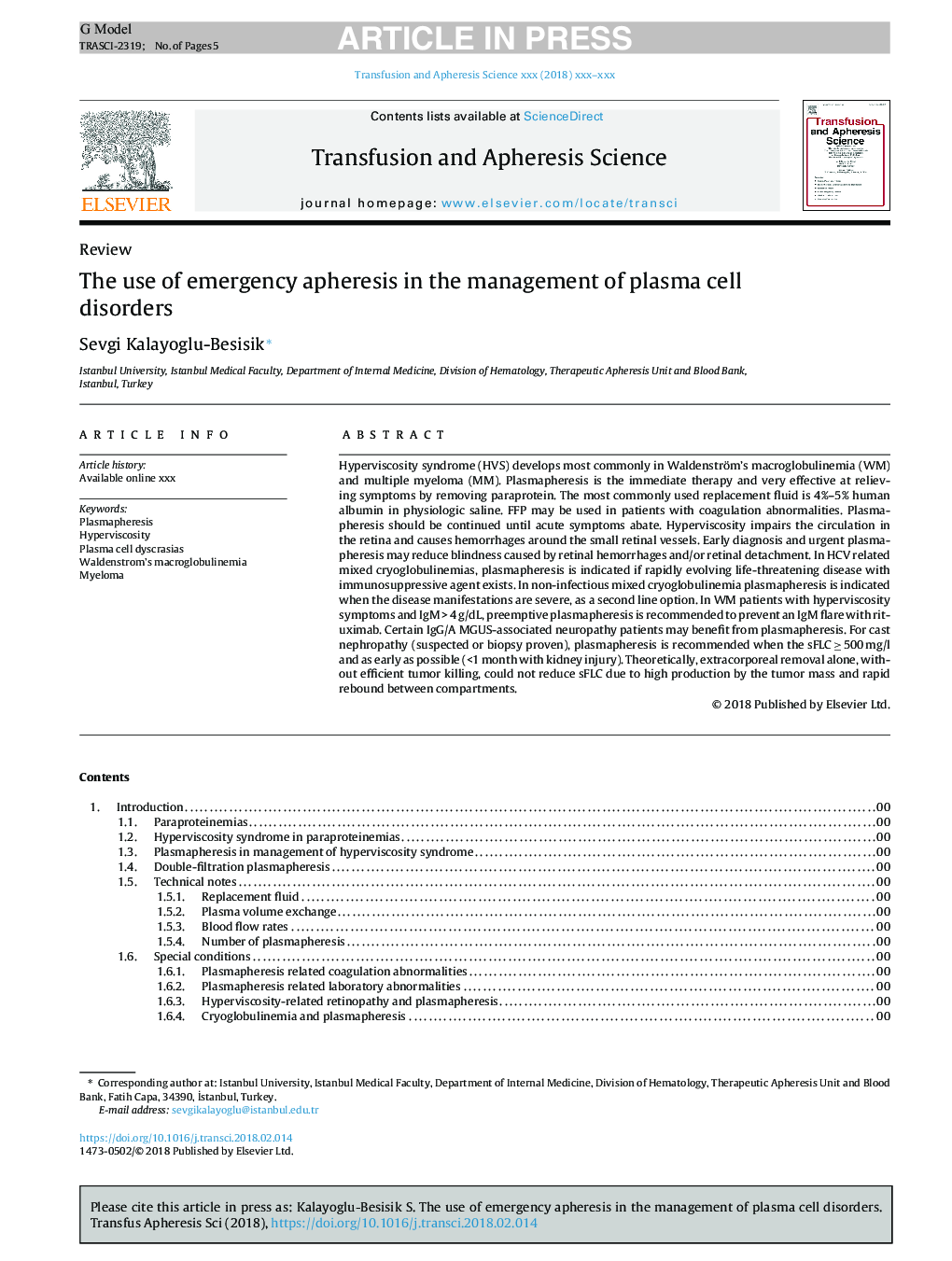| Article ID | Journal | Published Year | Pages | File Type |
|---|---|---|---|---|
| 8735041 | Transfusion and Apheresis Science | 2018 | 5 Pages |
Abstract
Hyperviscosity syndrome (HVS) develops most commonly in Waldenström's macroglobulinemia (WM) and multiple myeloma (MM). Plasmapheresis is the immediate therapy and very effective at relieving symptoms by removing paraprotein. The most commonly used replacement fluid is 4%-5% human albumin in physiologic saline. FFP may be used in patients with coagulation abnormalities. Plasmapheresis should be continued until acute symptoms abate. Hyperviscosity impairs the circulation in the retina and causes hemorrhages around the small retinal vessels. Early diagnosis and urgent plasmapheresis may reduce blindness caused by retinal hemorrhages and/or retinal detachment. In HCV related mixed cryoglobulinemias, plasmapheresis is indicated if rapidly evolving life-threatening disease with immunosuppressive agent exists. In non-infectious mixed cryoglobulinemia plasmapheresis is indicated when the disease manifestations are severe, as a second line option. In WM patients with hyperviscosity symptoms and IgMâ¯>â¯4â¯g/dL, preemptive plasmapheresis is recommended to prevent an IgM flare with rituximab. Certain IgG/A MGUS-associated neuropathy patients may benefit from plasmapheresis. For cast nephropathy (suspected or biopsy proven), plasmapheresis is recommended when the sFLCâ¯â¥â¯500â¯mg/l and as early as possible (<1 month with kidney injury). Theoretically, extracorporeal removal alone, without efficient tumor killing, could not reduce sFLC due to high production by the tumor mass and rapid rebound between compartments.
Related Topics
Health Sciences
Medicine and Dentistry
Hematology
Authors
Sevgi Kalayoglu-Besisik,
